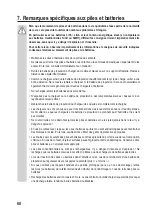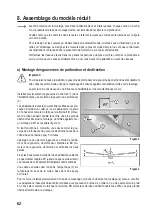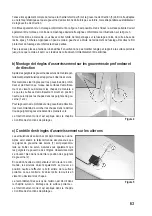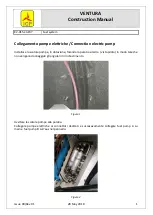
48
12. Programming the Flight Controller
The flight controller is now correctly set ex works.
The neutral position (motor off) and the motor brake can be programmed on demand.
a) Neutral Position (Motor Off)
The flight controller automatically recognises the control signal of the transmitter for motor control. If, for example,
the control lever for the motor control is not in the „Motor off“ position when the flight battery is connected (lever is not
pulled all the way back to the body), the current position of the control lever is recognised and saved as „motor off“.
However, this causes the problem that the control path for controlling the motor speed at the transmitter is now shorter
and that the speed control may not be fine enough anymore. Therefore, observe that the control lever for the motor
control is pulled back all the way when connecting the flight battery.
b) Motor Brake
The flight controller has an integrated motor brake. This „EMK brake“ stops (brakes) the motor immediately after the
control signal „Motor off“. The motor will then no longer run on due to the air flowing through the propeller in flight, and
the folding propeller may fold in against the fuselage. This reduces air resistance in pure gliding.
The motor brake can be switched on and off as follows:
•
Switch on the transmitter on and then put the throttle lever for motor control to the full throttle position.
• Then connect the flight battery to the flight controller again.
• The flight controller signals the battery connection with two low and two high sounds in a quick sequence.
•
Push the control lever for the motor function from the full throttle position to the bottom position (motor off) right
after this.
• The flight controller will now emit one or two sounds, depending on whether the brake was activated or deactivated
before. The motor brake is now deactivated or activated.
c) Undervoltage recognition
The flight controller has an undervoltage recognition that reduces the motor output or deactivates the motor at a volt
-
age below 3.0 V per cell (for the rechargeable battery in the model plane, i.e. at 6.0 V). Thus avoids a harmful deep
discharge of the battery. The undervoltage recognition cannot be reprogrammed.
















































